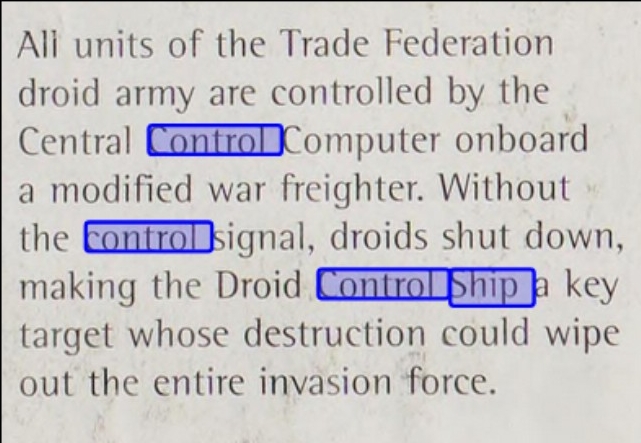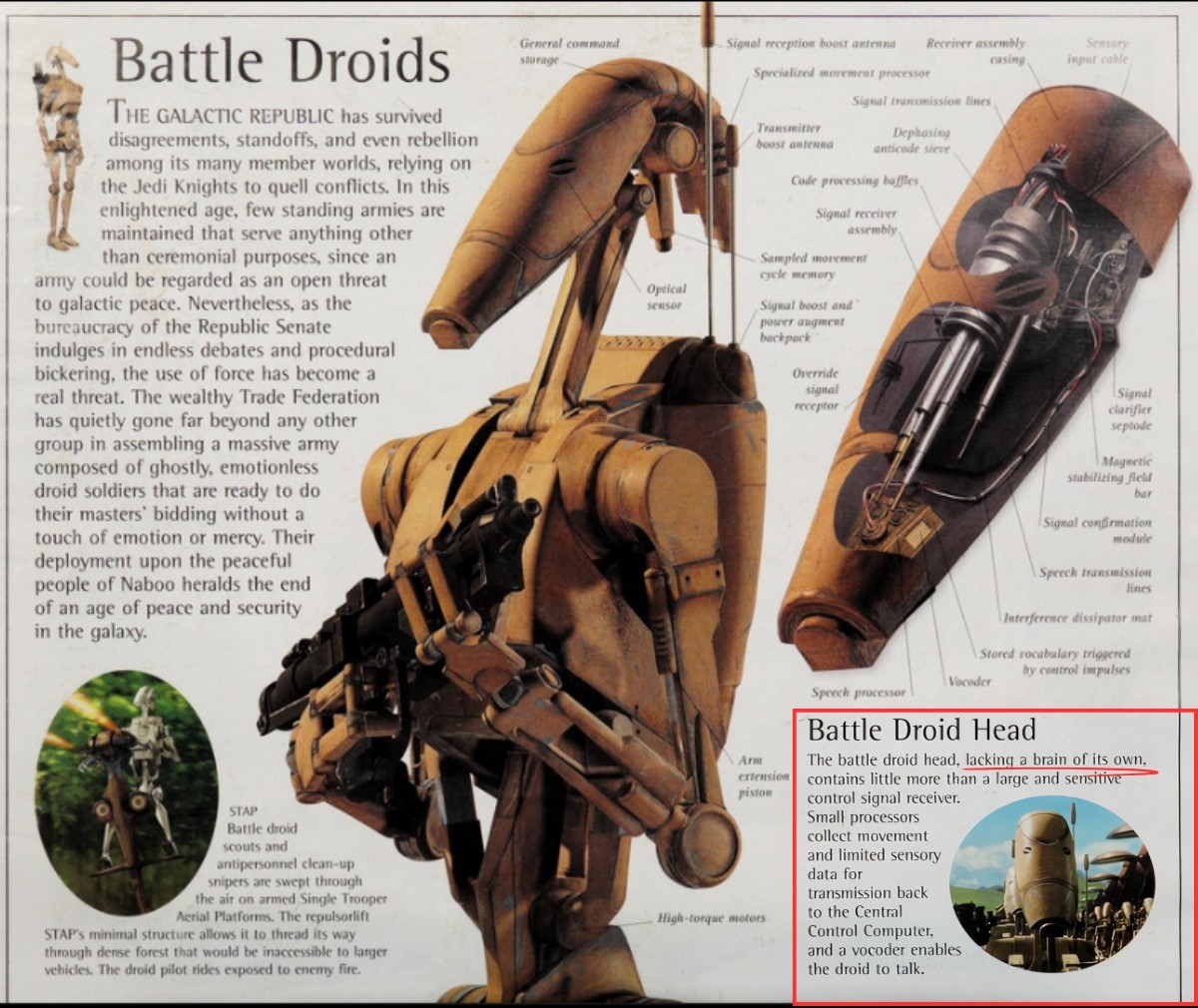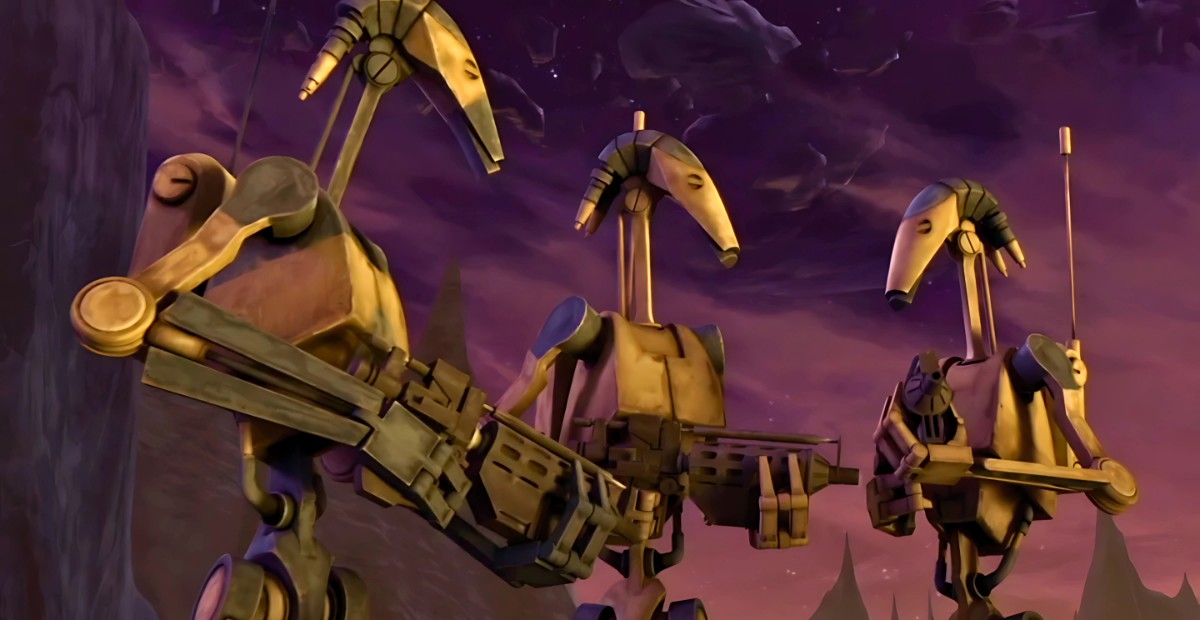Everyone remembers the B1 battle droids—the clumsy, overly talkative tin cans from The Clone Wars. They march into battle shouting “Roger, roger,” miss every shot, and die by the thousands. At first glance, they’re just comic relief. But the real reason they act so dumb isn’t funny at all. It’s actually the result of a huge failure in their original design—and a desperate fix that went horribly wrong.
They Were Never Meant to Think for Themselves
When battle droids were first deployed during the invasion of Naboo, they weren’t supposed to act independently at all. The Trade Federation designed them to be controlled remotely through a Central Control Computer on a Droid Control Ship in orbit. Each unit was just an empty shell—a terminal waiting for commands. That made them incredibly cheap and easy to mass-produce, but also dangerously vulnerable.
As stated in Star Wars: The Complete Visual Dictionary, “All units of the Trade Federation droid army are controlled by the Central Control Computer onboard a modified war freighter. Without the control signal, droids shut down, making the Droid Control Ship a key target whose destruction could wipe out the entire invasion force.”

That’s exactly what happened. Anakin Skywalker blew up the Droid Control Ship during the Battle of Naboo, and the entire droid army collapsed instantly. One lucky hit took out thousands of troops. That kind of vulnerability wasn’t going to cut it in a real war.
The Upgrade That Broke Everything
After Naboo, the Separatists knew they couldn’t rely on remote control anymore. So they tried to fix the problem by giving each B1 battle droid a brain of its own—well, sort of. Instead of installing advanced processors or actual AI, they went for the cheapest, most bare-bones solution that could keep the droids operational.
And it shows.
According to the Visual Dictionary, “The battle droid head, lacking a brain of its own, contains little more than a large and sensitive control signal receiver. Small processors collect movement and limited sensory data… and a vocoder enables the droid to talk.”

They weren’t truly autonomous. They were just given enough code to shuffle around and say things out loud—usually dumb things. The processors could barely handle battlefield logic, and without the central computer to guide them, the droids often misread situations, froze in combat, or overloaded with basic decision-making.
That’s why they talked so much. Their vocal processors were cheap, buggy, and constantly misfiring. What looked like banter or fear was actually the software trying (and failing) to interpret basic functions like targeting or retreating.
What You Thought Was Funny Was Just a System Crash
All those moments where battle droids argue, hesitate, or panic under pressure? That’s not a joke. That’s what happens when a glitchy, underpowered machine is forced to operate beyond its limits. Many fans think the B1s were reprogrammed for comic relief, but the truth is more disturbing—they weren’t reprogrammed at all. Their “personalities” developed from programming breakdowns and mounting stress responses.
They were built to follow, not to lead. Once they lost the central command, they were forced into roles they were never designed for. And the result was a battlefield full of confused, malfunctioning soldiers who couldn’t stop talking because their systems were falling apart mid-combat.
Disposable by Design
General Grievous hated the B1s, and it’s not hard to see why. They were unreliable, cowardly, and loud—but it wasn’t really their fault. They were mass-produced to die. The Trade Federation and later the Confederacy of Independent Systems never cared about improving them because they weren’t meant to survive. They just needed something to march forward and shoot.
Smarter, stronger droids like the B2s or Droidekas took on the heavy lifting. The B1s were kept around because they were cheap and could fill the screen, even if they couldn’t hit a target. That’s why they stayed dumb. That’s why they got glitchier. That’s why no one fixed them.

